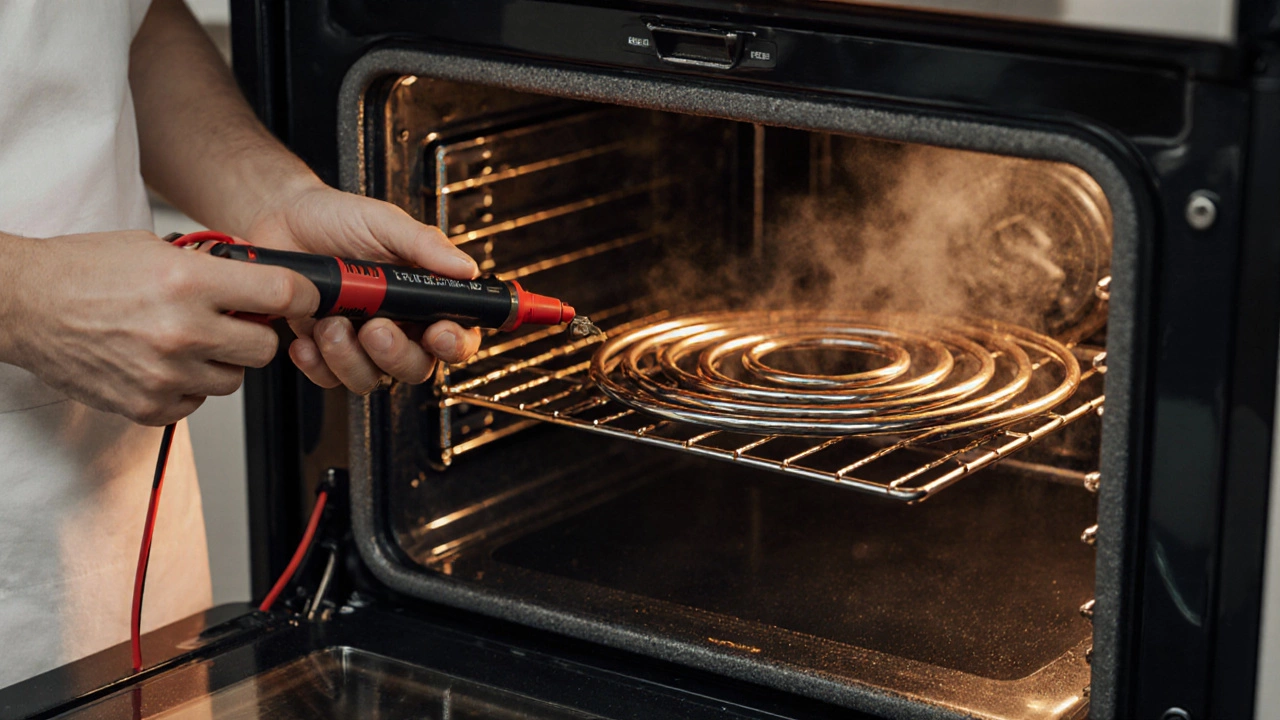Oven Thermostat: What It Is and Why It Matters
When dealing with Oven Thermostat, the component that monitors and regulates the temperature inside an oven. Also known as temperature regulator, it tells the oven when to turn the heating on or off so your food cooks evenly.
The thermostat works hand‑in‑hand with the Oven Heating Element, the metal coil that actually produces heat. When the thermostat senses that the oven is cooler than the set point, it signals the element to fire up; once the target temperature is reached, it cuts the power. This simple feedback loop is the core of every bake‑or‑roast cycle.
Common Oven Thermostat Problems
Most complaints start with one of three symptoms: the oven runs too hot, stays too cold, or cycles on and off erratically. A faulty thermostat often leads to uneven cooking, blown fuses, or a constantly flashing error code on the display. If you notice a recurring temperature mismatch, the thermostat is probably the culprit.
Diagnosing the issue usually means checking the Temperature Sensor, a probe that feeds real‑time temperature data to the thermostat. A broken sensor can feed false readings, making the thermostat think the oven is hotter or cooler than it actually is. Replacing the sensor is often cheaper than swapping the whole thermostat assembly.
Another frequent snag is the Control Board, the electronic brain that interprets thermostat signals and drives the heating element. A glitchy board may ignore the thermostat’s commands, causing the oven to stay on or off regardless of temperature. In many cases, a quick reset or board replacement solves the problem.
When you combine these pieces, you see a clear semantic chain: oven thermostat governs the heating element, the temperature sensor feeds it accurate data, and the control board executes the commands. Break any link and the whole system falters.
Repairing a thermostat doesn’t require a PhD. Most technicians start by unplugging the oven, removing the rear panel, and testing the thermostat with a multimeter. If the resistance doesn’t change with temperature, the part is bad. Swapping it out usually takes under an hour, and you’ll notice immediate improvements in temperature stability.
For homeowners who like DIY, you’ll need a few basic tools: a screwdriver set, a multimeter, and a replacement thermostat that matches your oven model. Always double‑check the part number; ovens from different brands use slightly different designs. Once installed, run a quick bake test at 180°C and use an oven thermometer to confirm the reading is spot on.
Even if you prefer to call a pro, knowing the key parts helps you get an accurate quote. Explain that the thermostat, sensor, or control board might be at fault, and the technician can focus on the right component. This saves time and prevents unnecessary part replacements.
Below you’ll find a curated set of articles that dive deeper into each of these topics—how to spot thermostat failure, troubleshoot heating elements, replace temperature sensors, and decide when to call a specialist. Whether you’re fixing your own oven or just want to understand what’s going on, the collection provides practical tips and real‑world examples you can use right away.

Common Oven Problems and How to Fix Them
Learn the most common oven problems, how to diagnose them, and simple fixes. Includes safety tips, a diagnostic table, and FAQs for quick troubleshooting.